By recording video footage every time you drive, the best dash cams give you extra piece of mind when you’re behind the wheel. To help you find the right model for your needs and budget, we’ve extensively tested all of the top dash cams you can buy. Covering everything from simple in-car cameras to smart, premium multi-cam systems, you’ll find our favorite models ranked in the expert guide below.
Based on the results of our in-depth reviews, we think the Nextbase iQ is the best dash cam money can buy in 2024. A smart dash cam in every sense, its makers promise to add innovative features this year, including a voice-activated Witness Mode. That said, it’s also the most expensive dash cam in our list. If you’d prefer to spend less, we recommend the Garmin Dash Cam Mini 2 as our top budget choice. We’ve included links to the best dash cam deals beneath each recommendation.
Every dash cam in this guide has been exhaustively tested by our experienced team. We put each model through a series of assessments in the real world, to ensure it performs well against our objective criteria. We go beyond the spec sheet to check factors such as ease of use and installation, the effectiveness of any driver assistance features, as well as overall video quality. We’ve explained more about how we test dash cams at the bottom of this page, together with some tips on how to pick the best option for you. We’ve also written a dedicated guide on how to fit a dash cam.

Timothy Coleman
Tim is TechRadar’s Cameras editor, with over 15 years in the photo video industry and most of those in the world of tech journalism, Tim has developed a deeply technical knowledge and practical experience with all things camera related. Tim notes, “many of the dash cams in this list have advanced features, such as GPS and driver assistance modes. If you don’t need these, you can save money by choosing a simpler model.”
The quick list
If you want a shortcut to the best dash cams for every driver, our quick summary below will give you an overview of the top options for every budget. When you find one that fits the bill, use the links beneath to jump down to our full write-up.
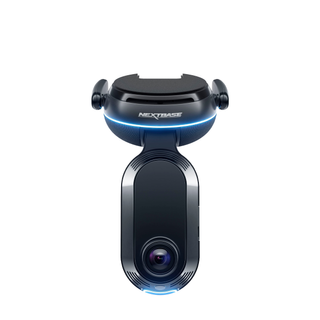
1. Nextbase iQ Smart Dash Cam
Best smart 4K model
If you’re happy to pay for a subscription, the Nextbase iQ is a 4K dash cam that’s easy to use and packed with clever features.
Read more below

2. Garmin Dash Cam Mini 2
Best budget option
Despite its tiny size, the Dash Cam Mini 2 records in Full HD with HDR, producing footage that’s sharp enough to pick out key detail.
Read more below

Best for most people
With impressive 4K video quality and a flagship feature set, the Nextbase 622GW is the best dash cam you can buy right now.
Read more below

Best for high-mileage drivers
The Nexar Pro is a dual-cam solution aimed at those who spend extended periods behind the wheel, limited to 1080p.
Read more below

Best low-profile 4K cam
Neat and relatively compact, the Vantrue E1 is an attractive dash cam that’s capable of recording quality 2.5K video at 30fps.
Read more below
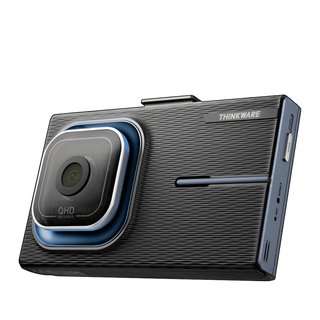
Best for ease of use
With a large touchscreen and icon-based interface, the X1000 is simple to configure and you don’t need to rely on an app.
Read more below
Load the next 4 products…

Best value dual system
Adding a 2K rear camera to a slick front unit with proven video quality, this dual-cam system represents great value.
Read more below
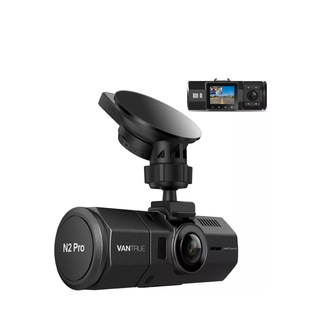
Best for ride-share drivers
Designed with taxi drivers in mind, the Vantrue N2 Pro forgoes many of the extras which your car is already likely to have.
Read more below

Best 360-degree
This unique 360 dash cam covers an omni-directional view, ideal for capturing both your journeys and your in-car karaoke.
Read more below

Best for analogue vehicles
A dash cam and sat nav combo, the Garmin DriveCam 76 is a feature-packed tool for vehicles without an infotainment system.
Read more below
The best dash cam in 2024
Why you can trust TechRadar
We spend hours testing every product or service we review, so you can be sure you’re buying the best. Find out more about how we test.
Below you’ll find full write-ups for each of the best dash cams in our list. We’ve tested each one comprehensively, so you can be sure that our recommendations can be trusted.
The best smart dash cam

Buy it if:
✅ You want an all-in-on dash cam: With a comprehensive suite of clever safety and security features, the Nextbase iQ is the complete dash cam package.
✅ You want a future-proof model: Firmware updates are in the pipeline which will add additional functionality to the iQ’s already impressive arsenal.
Don’t buy it if:
❌ You don’t need a complex camera: If you only want to capture video of the road, there are simpler dash cam options for a lot less money.
❌ You want a subscription-free dash cam: Basic functionality is free, but you’ll need to pay subscription fees for the full set of Nextbase iQ features.
A smart surveillance camera for your car, the Nextbase iQ is as feature-packed as dash cams come. Available in 1K, 2K and 4K variants, it’s a premium solution with a suite of connected skills. That includes parking assistance, a voice-activated Witness Mode and the ability to check in on your vehicle via the Nextbase iQ app, as well as GPS, Bluetooth and Wi-Fi connectivity. All three versions include an interior camera, and there’s an optional rear-facing unit. You will need a paid subscription to get the full benefit of its abilities, which means the iQ can quickly become a costly bit of kit.
But our tests found that it’s also an impressive one. Setup proved simple in our review, while the app made it easy to access its many features. Footage and audio from our 4K review unit was predictably excellent, too. Because powered is delivered directly from the car’s battery, the system remains active even when the engine’s off. It will be overkill for many road users, but if you want a complete, all-in-one camera to monitor your car at all times, the Nextbase iQ is as clever as they come.
The best budget dash cam

Buy it if:
✅ You want a hidden dash cam: Compact dimensions mean the Mini 2 pretty much disappears behind your rear-view mirror, with no impact on forward visibility.
✅ You prefer a simple setup: Garmin keeps the Mini 2 simple, making it a reliable tool that’s easy to install and runs faithfully in the background.
Don’t buy it if:
❌ You want a feature-packed model: Putting simplicity first means the Mini 2 doesn’t offer options such as speed camera alerts or what3words integration.
❌ You need 4K video footage: The Mini 2 is limited to 1080p Full HD. You’ll need to spend more on a premium model for higher resolution video.
The Garmin Mini 2 is tiny enough to disappear behind your car’s rear-view mirror. Despite its size, it records in Full HD at 30fps with HDR. In our review, it produced footage sharp enough to pick out key details like registration plates, regardless of the ambient light and weather conditions. We found installation quick and simple in our tests, too. The plastic arm takes up very little windscreen space, while the ball-and-socket joint makes it easy to reposition.
The interface is similarly accessible: though there’s no display, shortcut buttons let you save clips and mute the mic with one touch. We found that the Garmin Drive smartphone app (for iOS and Android) lets you easily change settings, review recordings and check the camera’s view. While features are limited to voice controls and a g-sensor that can detect collisions, we felt that GPS was the only real omission. Unless you need the best dash cam with driver assistance functions, the Garmin Dash Cam Mini 2 will leave you wanting for very little. Simple, subtle and reliable, it’s the definition of set-and-forget technology.
The best dash cam for most people

Buy it if:
✅ You want emergency services on call: Thanks to what3words integration, the 622GW can pinpoint your location and instantly forward it to emergency services.
✅ You’d like sharp video footage: Harnessing a quad-core processor and six-layer f/1.3 lens, the 622GW can capture impressively detailed 4K footage.
Don’t buy it if:
❌ You want seamless connectivity: Connecting to a smartphone isn’t always straightforward, with the Wi-Fi connection often failing to establish during our testing.
❌ You want built-in rear recording: There are rivals for a similar price with rear-view cameras as standard, but it’s an optional add-on for the 622GW.
With impressive video quality and a flagship feature set, we think the Nextbase 622GW is the best dash cam you can buy right now. We found its 4K/30p footage almost cinematic in testing, with crisp definition and outstanding detail. Low-light and poor-weather algorithms also improve results in tricky conditions. Drop down to 1080p and we found that you can shoot 120fps slow-mo that makes it easier to pinpoint things like registration numbers. We were impressed in our review with how effectively the built-in polarizing filter reduced windscreen glare, too, and how well the digital image stabilization soaked up road vibrations.
Our tests did reveal that setup was slightly fiddly, and the 3-inch touchscreen requires obvious swipe inputs. We also had some trouble connecting to our smartphones to transfer video clips. That said, we still think the 622GW is a simple camera to use overall. We found its interface intuitive, while the display is big, sharp and clear. Footage is automatically saved when an incident is detected, and thanks to clever what3words integration, the 622GW can pinpoint the location of stricken vehicles and send it on to emergency vehicles. There are less bulky alternatives with better voice control, but if you want a dash cam that reliably captures clear 4K video, the 622GW is our recommendation.
The best dash cam for high-mileage drivers
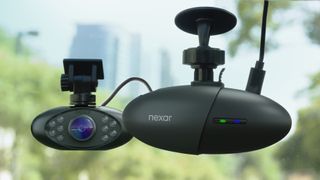
Buy it if:
✅ You want comprehensive coverage: The Nexar Pro records interior and exterior video out of the box, making it a total dash cam solution for any vehicle.
✅ You value cloud video backup: Unlimited free storage gives you peace of mind that all of your video clips are securely backed up to the cloud.
Don’t buy it if:
❌ You want a hands-off installation: Fitting the Nexar Pro isn’t too challenging, but there’s a fair amount of wiring to hide if you don’t want cables trailing in the cabin.
❌ You want a simple solution: Nexar’s app is home to a host of useful tools, but you’ll find better value elsewhere if you only want a basic cam for recording the road.
Aimed at those who spend extended periods behind the wheel, the Nexar Pro is a dual-cam solution that can record video both inside and outside a vehicle. Comprised of two separate camera units connected by a cable, we found the setup to be pretty neat, even if it took up a fair bit of screen real estate. It doesn’t record in 4K, but from our tests we found its 1080p video perfectly serviceable. The external camera fared well even in tricky shooting situations, from heavy rain to bright sunshine.
We found that the Nexar app is central to the twin-camera experience: it’s where you can fine-tune settings, generate incident reports and back recorded clips up to the cloud (Nexar bundles cloud storage in for free). Other useful tools include break-in alerts if someone tries to tamper with your car, as well as GPS data logging. There are cheaper dash cams out there with fewer features to play with, but if the security of your car is crucial to your daily life, the Pro is hard to beat in terms of protection and overall value.
The best low-profile 4K dash cam

Buy it if:
✅ You want well-priced GPS: With built-in GPS that unlocks useful speed and location data, the E1 represents decent value for the price.
✅ Your car already has driver aids: Rather than double up by equipping the E1 with driver assistance systems, Vantrue has instead focused on build and video quality.
Don’t buy it if:
❌ You can’t fit a dash cam centrally: With no sideways adjustment, the E1 needs to be mounted to the middle of your windshield, otherwise footage won’t be level.
❌ You expect a polarizing filter as standard: Some dash cams include a polarizing lens to reduce reflections from the hood, but it’s an optional extra for the E1.
Neat and relatively compact, the Vantrue E1 is an attractive dash cam that’s capable of recording 2.5K video at 30fps. It can also record Full HD footage at a smoother 60fps, for enhanced detail while you drive. Results in our review proved sharp night and day, with accurate colors and acceptable noise in low light. Our testing also revealed that the optional polarising filter usefully reduces dashboard reflections, while the 160-degree angle captures a wide view of what’s ahead.
We found that the E1’s magnetic mount works well, but the lack of sideways adjustment does limit its use if you can’t fit it centrally. A tiny 1.54-inch screen offers a preview when installing, but the smartphone app is the more useful way to tweak settings. You don’t get the driver assistance systems of other dash cams, so it’s up to you or your vehicle to spot speed cameras and potential collisions. That said, you still get Wi-Fi and GPS connectivity, and we like that Vantrue has focused on video quality over unnecessary extras.
The best for ease of use

Buy it if:
✅ You want a complete dash cam: It doesn’t have GPS, but the Thinkware X1000 is otherwise a comprehensive two-camera bundle with very few limitations.
✅ You want a standalone solution: With a convenient touchscreen interface, the X1000 works without the need for a supplementary app.
Don’t buy it if:
❌ You need GPS coverage: The Thinkware X1000 does support GPS functionality, but only through a module that’s sold separately.
❌ You don’t want a hard-wired camera: The X1000 can work with a plug-in adapter, but hard-wiring is the better option, though you might need a pro to fit it.
Capable yet accessible, Thinkware’s X1000 comes bundled with everything you need to record front and rear. Our tests found a lot to like about the X1000. Installation does require the use of several sticky pads and we felt that the user guide could have been more comprehensive in helping to navigate setup. You’ll also need to hard-wire it to unlock the full set of features, including parking surveillance, while GPS and radar detection require optional accessories.
Still, once in place, the unit feels nicely put together. Its best attribute is its ease of use: with a large 3.5-inch touchscreen and icon-based interface, it’s simple to configure and there’s no need to rely on a smartphone partner app. Capture settings can be tweaked via the touchscreen, but we found that it worked well right out of the box. Results from both cameras were impressive, with plenty of crisp detail and decent dynamic range, even in dim and dark conditions. If you’re looking for a stress-free and reliable dash cam, the X1000 gets plenty right.
The best value dual dash cam

Buy it if:
✅ You want a faff-free dash cam: Although it’s packed with features, the Dual Dash Cam is easy to use and simple to install.
✅ You like lots of features: Front and rear cameras, together with built-in GPS, a G sensor and a slick mobile app, mean this dash cam is generously equipped.
Don’t buy it if:
❌ You want a wide view of the road: Both cameras have a 140-degree field of view, which is narrower than that of many rivals and which only covers the windshield.
❌ You only need a simple setup: Its comprehensive feature list makes the Dual Dash Cam good value, but its skills will be overkill for many users.
An update to the already excellent Miofive 4K Dash Cam, the Dual edition adds a 2K rear camera. The front camera is a proven performer, capturing sharp detail both night and day during our tests. Its design remains as slim and modern as with the single-cam option, although we wish it used a suction cup instead of sticky adhesive. Joining it is a tiny rear camera that records 2K video at 30fps. Like the forward unit, it covers a 140-degree field of view. That’s enough for the view front and rear, but rivals offer wider angles.
With a generous 128GB of internal storage, you get twice as much capacity as the previous Miofive 4K, with space for around 8 hours of record time before loop recording will start to overwrite the oldest clips. We were impressed by the slick Miofive app, as well as the camera’s generous feature set: you get built-in GPS, collision warnings and super capacitor power. Even with these capabilities, setup remains straightforward, although you might need to be creative about hiding the longer, thicker rear camera cable. Overall, if you need dual-cam coverage, we think there’s plenty of value here.
Best for ride-share drivers

Buy it if:
✅ You’re looking for a dual-view dash cam: If you want an in-car camera that records the interior, the N2 Pro is compact for a dual-lens dash cam.
✅ You don’t like dealing with apps: Pared-back by design, the N2 Pro works without an app and forgoes assistance systems to keep usability simple.
Don’t buy it if:
❌ You don’t drive for a living: Most road users don’t need interior recording, so unless you’re ferrying passengers for pay, you might find better value elsewhere.
❌ You want Wi-Fi and Bluetooth connectivity: The N2 Pro doesn’t have Wi-Fi or Bluetooth, so transferring video files means removing the microSD card.
Relatively compact for a dual-lens dash cam, the Vantrue N2 Pro records a detailed view of the road ahead and your vehicle’s interior. Designed with taxi drivers in mind, it forgoes many of the extras which your car is already likely to have, including speed camera alerts and collision warnings. That simplicity extends to its connectivity, a factor we liked in testing. With no Wi-Fi, Bluetooth or smartphone app, it’s a self-contained dash cam that gets on with the job of capturing events. The only feature we did miss was GPS tracking, although Vantrue sells an optional GPS windscreen mount.
We were happily surprised by the video quality our review. The cameras can record Full HD footage in both directions, capturing video that’s smooth, sharp and clear, matched by decent audio. The interior camera occasionally struggles in bright sunlight, but that’s a small criticism of otherwise impressive performance. The front camera can also go solo to shoot in even more detailed 1440p.
Best 360 degree

Buy it if:
✅ You’d like 360-degree coverage: The Omni can rotate through to cover a full 360 degrees and film from any angle.
✅ You enjoy a user-friendly experience: The Omni has charming ‘human-like’ display graphics.
Don’t buy it if:
❌ You need 4K video quality: Topping out at 1920×1080 Full HD video up to 60fps, the Omni’s video resolution is bettered elsewhere.
❌ Auto syncing your footage to the cloud is helpful: You can sync your footage to the cloud, but only via an optional 4G hardware kit.
There’s no dash cam quite like the 70mai Omni. It’s a single camera with a 140-degree field of view and a trick up its sleeve: it can rotate to provide full 360-degree coverage from its position on the windshield. That means you can record your journeys out the front like any other dash cam, or turn it to film inside the cabin of your vehicle. Video resolution tops out at 1080p up to 60fps, so footage isn’t the most detailed, but we were impressed by the low-light performance of the f/1.8 lens in testing.
In our review, we found the Omni well-designed with a user-friendly experience, complete with fun graphics and animations on the display when you interact with it. It also benefits from AI-powered surveillance features to keep your vehicle safe, such as motion detection and threat-level processing. As far as single dash cams go, this is one of the most fun to use, plus the list price is reasonable – though you’ll need to buy the 4G hardware kit if you want to backup to the cloud automatically.
Best for older cars without an infotainment system

Buy it if:
✅ Your vehicle has no infotainment system: With features like mapping and forward collision warnings, the DriveCam 76 is ideal for older vehicles without such systems as standard.
✅ You want an all-in-one system: Combining a dash cam and a sat nav system means fewer devices mounted to your windshield, giving you a clearer view.
Don’t buy it if:
❌ You have a small windshield: Because it’s larger than many dash cams, the DashCam 76 can feel like an obstruction in vehicles with shallow windshields.
❌ You’re on a tight budget: Its multiple talents mean the DriveCam 76 demands a fairly high price. If you won’t use all of its features, you’ll find better value in standalone cameras.
Combining a dash cam and a sat nav, the Garmin DriveCam 76 is a feature-packed tool for vehicles without an infotainment system. In testing, we found its 7-inch display intuitive to use. It makes Garmin’s rich mapping visuals easy to follow, while navigation is clear and well-timed, complemented by live traffic updates when paired with your smartphone’s data connection. The unit itself is much larger than many rivals, though, which can make it tricky to place without obstructing the driver’s view. Helpfully, both the display angle and camera lens are adjustable, so you can find the right position between road and driver.
Full HD footage is shot in HDR at 30fps, delivering balanced exposure and enough detail to make number plates legible. That said, we found that video suffers from noticeable stabilization wobble. This distortion doesn’t reduce the detail, but footage is worse than from other Garmin dash cams. You’ll also find better value dash cams if you don’t need features such as smartphone notifications and weather updates. But if you want a dash cam with added smarts, this is a great choice.
How to choose the best dash cam for you
How to choose the best dash cam for you
The best dash cams can have anything from one, two or even three cameras. Single camera dash cams record the outside view from your windscreen, dual dash cams add an inside facing camera which is especially useful for ride-share drivers like taxis, while three-camera dash cams are more for professional drivers clocking up the miles, adding an additional viewpoint from the outside of the vehicle, being especially handy for trucks.
Video resolution is a key consideration when choosing a dash cam, as explained below. Most dash cams in 2024 can record footage in Full HD, which is generally enough to identify large details in a video clip. Sharper 4K dash cams tend to cost more, but capture video at a higher resolution. This makes it easier to pull out crucial details such as number plates, which mean 4K dash cams generally offer more reassurance from a safety perspective.
Video frame rates are also important. Most dash cams can record at 30fps, which is fine for reviewing footage at full speed, but the best models can capture action at a smoother 60fps. This gives you the option to slow down footage after the fact, making it easier to pick up details at half-speed. It’s increasingly common to find dash cams that can capture Full HD video at 60fps, but 4K 60fps recording is generally reserved for professional dash cams. Certain models, such as the Nextbase 622GW, also feature digital image stabilization, which helps to smooth out footage on bumpy roads.
There are also a wealth of features to consider, including a touchscreen display, a companion app, GPS, parking surveillance, voice control, sat nav and what3words to name but a few.
If you drive an older car without an infotainment system, then it’s worth getting a dash cam with sat nav, but there’s little point if your car already has sat nav. GPS location data is handy when recording incidents, while some even include what3words geolocation data which offers the most precise way of pinpointing your vehicle and super handy should you become stricken.
Getting started with a dash cam
The overall experience installing, getting started and ease of use on the go varies wildly from dash cam to dash cam. For the most part, dash cams mount somewhere along a car’s front windscreen or windshield. Of course, wherever you place your dash cam must not block your view of the road.
The advent of rear-facing cameras (or complete kits that contain both front and rear) require a little extra installation, as these often involve cables that run from front to back. Expect some fiddly work involving the car’s headliner to get these fitted correctly.
Dash cams record smaller snippets of footage, usually in increments of one to two minutes at a time. The cameras continually record over the oldest clip in order to keep the memory card from filling up as well.
While older models typically required the user to manually save or tag the appropriate clip in the event of an accident, new G-Sensor-based incident detection technology has taken over, and now takes care of this automatically.
There are also dash cams that boast additional features that, just like any other technology, translate to a higher asking price. In addition to better video quality like 4K, night vision and built-in Wi-Fi or Bluetooth for easy file transfer may also be included.
A rise in popularity of voice control has also made its way over to the humble dash cam, so expect Alexa integration and other such voice-activated technology at the very pinnacle of the range.
Numerous parking modes are also possibilities. These use a time-lapse feature as a surveillance function to capture details of those irksome car park prangs when you’re off running errands.

Is it worth having a dash cam?
Yes, absolutely. Some drivers might not like the idea of a camera constantly monitoring their vehicle, but some models of dash cam (like the Garmin Dash Cam Mini 2) are compact and subtle enough to almost disappear behind the central rear view mirror. In other words, once they are up and running you soon forget about them; they just sit there, quietly keeping an eye out, ready to save footage if you’re caught in an accident.
If the worst were to happen, and you need to prove your innocence, the dash cam’s footage could do exactly that. This footage can also be set to include your speed, along with the time and date to help reinforce the validity of your evidence if blame is disputed by the other party. As well as monitoring the road ahead, dash cams can be used to record out of the rear windscreen too, recording footage if you are unfortunate enough to be rear-ended by another motorist.
Even if you’re not directly involved in a collision, dash cams can still be useful. Many have a button for quickly saving the last few seconds of video. That way, if you need something ahead that you think needs recording, like an accident between two other vehicles, an example of bad driving, or something else noteworthy, you can provide that evidence to whoever might need it. Another useful feature of some dash cams is how they will call the emergency services if a crash is detected and you don’t respond; they can then share your location and ensure help is on its way.
Furthermore, many dash cams come with additional driver assistance features. These include alerts to let you know about nearby speed cameras and red light cameras, plus a prompt to tell you the vehicle in front has set off – just in case you weren’t paying attention while sat in traffic.
Lastly, some dash cams can be permanently installed in your vehicle and hard-wired, giving them a constant power supply. When paired with a special parking mode, this enables the camera to sense impacts and record footage while the car is parked, potentially gathering useful evidence of your neighbor’s poor parking.
Can a dash cam drain your car battery?
Different dash cams use different power sources, so it’s always worth checking how your new dash cam is powered if you’re concerned about draining your car’s battery.
Some dash cams have internal power, or can easily be charged using external power sources. However, the rest use the cigarette lighter/USB port in your vehicle or need to be hard-wired, meaning they do use your car’s battery.
If you use the cigarette lighter/USB port to power your dash cam, then leaving it plugged in overnight might drain your car battery, depending on if your vehicle supplies constant power to the ports. Hard-wired dash cams can be set up to switch on with the car ignition in some vehicles to save battery, too.
If you were planning on using your new dash cam for security purposes, you might want to consider choosing a dash cam with motion detection and using an external power source to make sure you don’t drain your car battery.

Is a GoPro better than a dash cam?
GoPro cameras are some of the best action cameras you can buy. They can be easily mounted to your dashboard and set to record video on a rolling loop. Because GoPro cameras are compact, they shouldn’t obstruct your view of the road ahead, while the latest models are capable of capturing videos at resolutions sharper than 4K.
However, there are certain factors which make a dedicated dash cam better than a GoPro for recording the road. The price difference between a GoPro Hero 11 Black and a premium dash cam such as the Nextbase 622GW is less than you might think. But what you don’t get with a GoPro camera are the more advanced features associated with a high-spec dash cam, such as collision detection or parking protection. You’ll also need to manually set a GoPro to record every time you get behind the wheel, even if its power cable is connected to your vehicle.
So if you already own a GoPro, pairing it with a dashboard mount or windshield suction cup is an easy way to record video while you’re driving. We even have a dedicated guide on how to use a GoPro as a dash cam for your car. However, if you’re looking for a comprehensive solution to capture in-car video, it’s worth considering a dash cam.
Are dash cams legal?
Using a dash cam is generally legal in both the UK and the US. In fact, certain bodies in both countries actively encourage the use of dash cams to reduce insurance premiums. That said, there are a few basic rules to follow to ensure your dash cam usage stays on the right side of the law.
A dash cam shouldn’t obstruct your view of the road ahead or distract you while you’re behind the wheel. For this reason, some people prefer to choose a model without a display. In the US, many states have regulations governing where you can mount a dash cam. Several prohibit you from fitting one to your windshield, for example.
Privacy regulations are another factor to consider. As there is no reasonable expectation of privacy on public roads, it’s generally legal to record with a dash cam while driving. However, this changes on private property, such as a person’s driveway. While dash cam recordings can usually be justified on the grounds of safety and security, it’s important to act reasonably and be mindful of where and what you record.
This is particularly the case for professional drivers. If you’re a taxi driver, for example, you should inform passengers that your vehicle is fitted with a dash cam, particularly if it’s recording audio. In the US, several states only permit sound recording with the permission of everyone in the vehicle.
You should also think carefully before sharing any dash cam footage online. Uploading videos that identify individuals without their consent could breach data protection laws. It’s always safer to blur details such as registration plates and faces when publishing any dash cam clips.
It’s worth nothing that a number of European countries restrict the use of dash cams, so be sure to familiarize yourself with regional rules.
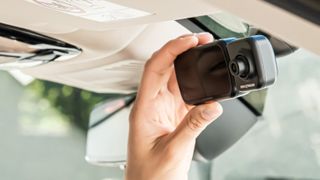
What is loop recording?
Loop recording allows dash cams to continuously record video footage to their built-in storage or memory card. The setting automatically overwrites the oldest clips on your camera with new ones when its storage becomes full. This way, it can keep recording without requiring you to pull over and manually delete unneeded clips. This gives you the reassurance that there will be no gap in your driving log.
By default, dash cams save video clips in sequential order. Loop recording usually works by splitting these clips into preset intervals based on file size or time, such as 2-minute or 5-minute segments. By dividing recordings like this, dash cams can write over small parts of a longer video without erasing the entire thing at once. This can also make it easier to locate clips of specific moments, without having to scan through lengthy recordings.
To stop important clips from being overwritten, many of the best dash cams can automatically detect potential incidents and flag the relevant footage to protect it from deletion. Most models with loop recording also allow you to manually tag clips with the same effect, generally by way of a shortcut button on the body of the dash cam.
How we test dash cams
Almost all dash cams can be fitted to a car without making any permanent modification. They can be attached to a windscreen using a suction cup or removable adhesive pad, and powered from either a USB port or the 12V socket found in almost all cars. To test dash cams, we install them in our car, attach them to the windscreen and pair them to our smartphone as if we had bought them ourselves.
We then drive, at day and night, to test how the camera handles different lighting conditions, and ideally in varied weather too. The footage is then transferred to a smartphone or computer and viewed to check out the quality, and whether key details like vehicle registration plates are legible. This also gives us an opportunity to see how easy (or difficult) it is to view, transfer and save recorded footage.

Additional features like voice assistants and drive assistance systems get a thorough workout, and we also test how easy it is to turn these off, or adjust them to our personal preferences. Being able to quickly and easily turn audio recording off is key, especially when carrying passengers who don’t want their conversations recorded.
Naturally, we cannot crash a vehicle to see how well the dash cam detects collisions. Instead, firmly tapping the dash cam can simulate a collision, allowing us to see what happens when footage is saved. It is also possible to trigger a recording by powering the camera with a portable battery and tapping it against our desk. It may seem rudimentary, but it works and keeps our insurance company happy.
Sometimes, driving over a particularly aggressive speed bump can trigger a dash cam recording. In these cases we learn that the camera’s g-sensor is too sensitive, and needs to be adjusted, providing the menu system includes such an option.
link








More Stories
Microsoft rushes out emergency fix for Windows 11 bug that stops PCs recovering from boot failures
Expedia TAAP: Empowering travel advisors by building with them, not around them
NYT Strands hints and answers for Monday, October 13 (game #589)